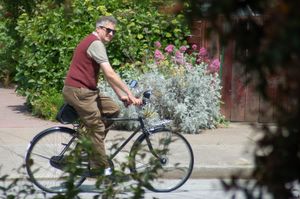![]()
Home > Old Machines > Rudge Sports c 1945
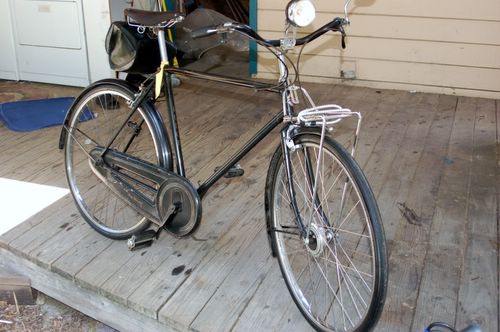 |
Found this in the back of a shed in Cupertino. It must have been parked right after purchase - about as close to new as you can get, although it was covered in 60 years of grime and a light coating of rust. Cleaned up really nice, added the 1952 Bakelite Dynohub and headlight, the front rack, the saddlebag, and it's now my only transportation.
|
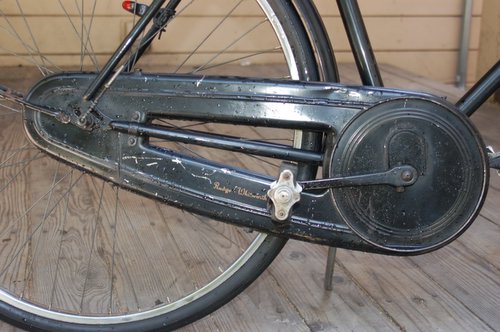 |
When I first started riding bikes, I felt like some kind of savage pedaling around with gears and chains hanging out for all to see - a full chaincase is really the only civilized way to get around. I felt horrible when I put the scratches in the paint - I take the train occasionally and bikes get strapped together. Never make that mistake again. I just washed the bike, so there is still some water on it in these pictures.
|
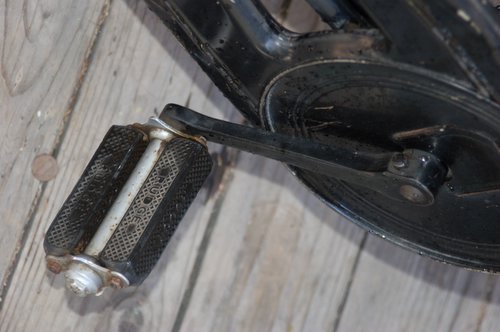 |
The rubber on the pedals and hand grips is in amazing shape, I think because the shed it was stored in was two-sided it didn't get all dried out as it would in an oven-like garage. Notice the blackened cranks and cotter pins, and nickel-plated pedals. Brakes are nickel-plated too. Except for the stem and the seat post, there is no chrome on this bike. War shortage, you know, old chap. Even the tires were marked 'war grade,' although one of the tubes was of more recent vintage. |
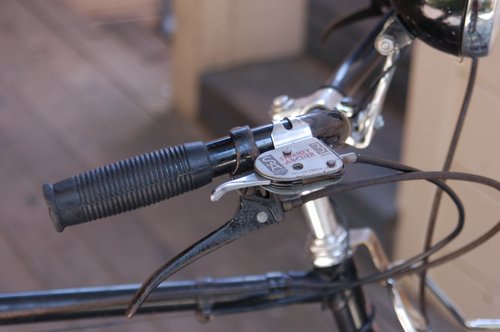 |
A flick of the finger and you change gears, even at a stop light. For this reason alone, an internal geared-hub is the only way to travel. Note the blackened brake handles. The brake cables are the originals - I think they are made of tarred fabric of some sort. I would be interested to learn exactly what, if anyone knows. Note the clips for the cables are all blackened, also. |
 |
Note the axle nuts and indicator spindle are blackened. I changed out the front axle with the Dynohub axle, but I kept the old one and the blackened nuts that were on the front wheel. There is no date stamped on the Sturmer-Archer AW hub, typical of pre-war hubs. |
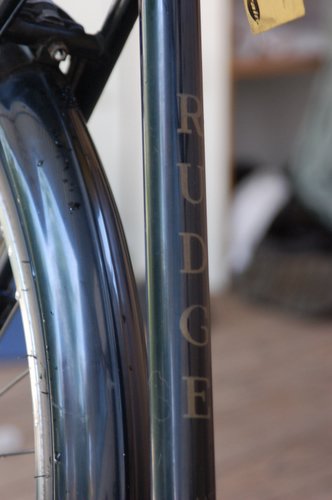 |
Rudge is a second label for Raleigh - used in cities where there were two bike dealers. It's not one of the lesser brands they made on the cheap for department stores and the like.
I was amazed at how the paint job cleaned up - I stopped polishing the fenders because they were getting too shiney. It would be tragic if this bike were stolen and dismembered - better to keep it a little dingy.
I am very lucky to live in one of the few places in the US where a car isn't really necessary. The Peninsula, in the San Francisco Bay Area, is only about 3 miles wide (the populated part of it...the rest is trees and mud) and there's a commuter train running up and down it. BART is nearby...ferries. I can connect with more trains, and three international airports. I can get to the beach in Santa Cruz faster on my bike than my family can in my wife's car, and it's a hell of a lot more peaceful.
|
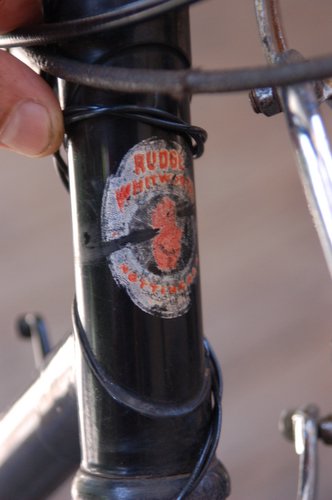 |
This bike has a sticker where the headbadge is usually riveted on, which dates it to just after the war, according to people who know better than
I do. I also have a 1951 Rudge in similar condition, and a lady's 1968 Rudge, which is green - an inappropriate color for a bicycle. If it isn't black, I wouldn't be caught dead on it. I started riding a bike in October of '05, and stopped driving a car a few weeks later. Sold the last one, a 1948 Plymouth Special Deluxe in February of '06. Not to brag, but when my wife killed her latest car (water goes in the radiator, too?) we took weeks to replace it. We can't even remember the last time we put gas in the new one. |
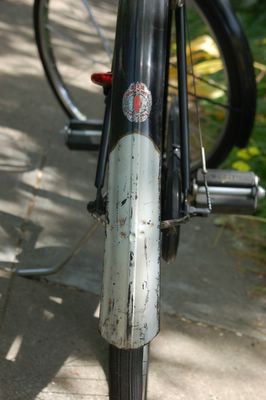 |
The bike has a refreshing lack of safety devices - the rear fender doesn't even have a hole for the typical rear reflector. Needless to say, I am usually careful to wear a baseball cap when I ride.
Here's a picture of the bike's rider. It was a weekend, and unbearably hot, so I went without a tie that day. Luckily, I don't think anyone I knew saw me. |
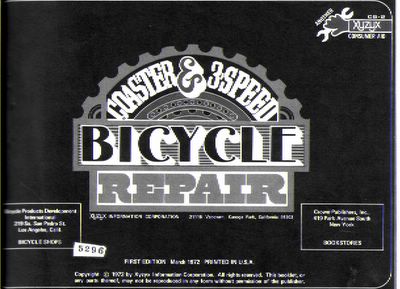 |
Looked all over for a book on repairs - the various web sources don't get into the details of a lot of basic stuff, assuming you know how the bearings in the rear wheel are got to. This book, 3 Speed and Cruiser Repair, vintage early 70s, is the only source I found, and it has directions for everything in clear, concise language and with exploded diagrams. I've scanned in the first 40 or so pages so far. Beware - the resolution is big enough to read, but the server is very, very slow - the pages will load slowly. I will make a pdf available some day.
The light bulbs that are stock on these bikes are pathetically dim and tend to burn out. I |
